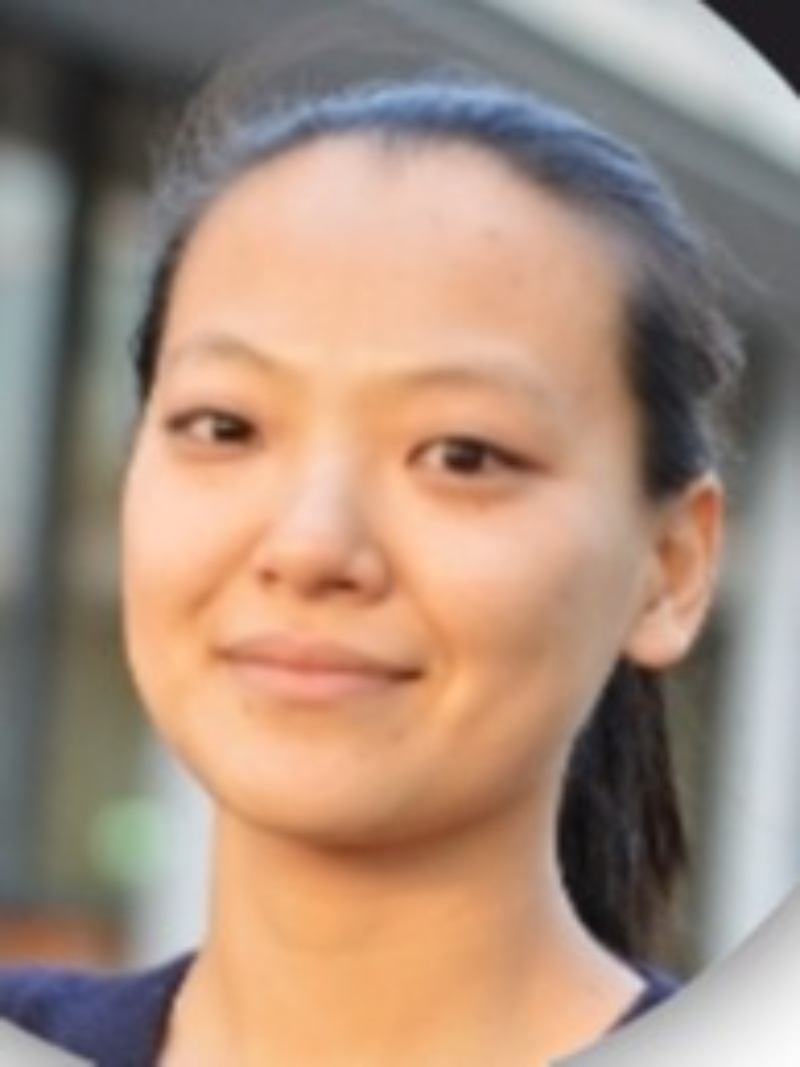
Cheng, Miranda C. N.
Research Fellow
2014- : Faculty member in the Institute of Physics and Korteweg-de Vries Institute of Mathematics, University of Amsterdam
2012- : Chargé de Recherche du CNRS (IMJ, Paris)
2010-2011: Postdoc at Harvard University, Department of Mathematics
2008-2010: Postdoc at Harvard University, Physics Department
2008: PhD in Theoretical Physics, University of Amsterdam (advisor: Erik Verlinde, co-advisor: Kostas Skenderis)
2003: MSc in Theoretical Physics, Utrecht University (supervisor: Gerard 't Hooft)
2001: BSc, National Taiwan University
Born in Taipei, Taiwan.
PhD Thesis (adviser Prof. E Verlinde): The Spectra of Supersymmetric States in String Theory
Main personal grants: ERC Starting Grant 2015, NWO Vidi Grant 2018, AS Investigator Award 2022, NWO Vici Grant 2024
Research Fields: Mathematical Physics, AI-for-Science, Vertex Algebras, Low-Dimensional Topology
My main research area is mathematical physics. I have a solid background in both mathematics and
physics and enjoy employing the tools and insights in both disciplines to solve interesting and meaningful problems in the realm of mathematical physics.
One of the main focus of my research since 2010 is the topic of moonshine. Highlights in the past
few years include the following. 1) The discovery of umbral moonshine. 2) Uncovering the relation between umbral moonshine and string theory in the background of K3 surfaces. The recent construction
of the umbral moonshine modules for 5 of the 23 cases of umbral moonshine. 4) The classification of
mock forms of the umbral moonshine. 5) The very recent discovery of a few examples of a novel type
of connection between modular-type functions and finite group representations.
Another recent interest is to apply the theory and techniques of modular forms to help understand questions in other topics in mathematics and physics. Examples include to put constraints on
the spectrum of 2d conformal field theory admitting a weakly coupled gravity dual description (see
my paper Elliptic Genera and 3d Gravity), and a new method to compute the four-point conformal
blocks of vertex operator algebras and 2-dimensional CFTs (see my paper Modular Exercises for Four-Point Blocks - I). Another important theme of my recent research is to investigate the relation between
modular-type functions, in particular quantum modular forms, logarithmic vertex algebras, and
three-dimensional topology. I believe that this is a rich and multi-disciplinary topic which will lead
to progress in various fields including topology, algebra, number theory, vertex algebras, and string theory.
Finally, my latest new interest lies in the application of mathematics and theoretical physics in artificial intelligence. So far, my work in this direction includes equavariant deep learning, application of machine learning to lattice field theory sampling, and the study of optimal path for generative models, in particular diffusion models.
- PhD University of Amsterdam 2003/9 - 2008/7
- MSc in Theoretical Physics Utrecht University 2001/9 - 2003/7
- BSc in Physics National Taiwan University 1997/9 - 2001/7
- Long Term Visitor Department of Applied Mathematics and Theoretical Physics, University of Cambridge 2013 - 2016
- Visiting Fellow IAS, Princeton University 2010/9 - 2010/12
- Associate Professor Institute of Physics and Korteweg-de-Vries Institute for Mathematics, Universiteit van Amsterdam 2017/6 - currently
- Assistant Professor Institute of Physics and Korteweg-de-Vries Institute for Mathematics, Universiteit van Amsterdam 2014/1 - 2017/6
- CNRS Researcher (CR) Institut de math ́ematiques de Jussieu, U. Paris 7 2012/1 - currently on leave
- Postdoctoral Fellow Mathematics Department, Harvard University 2010/9 - 2011/12
- Postdoctoral Fellow Physics Department, Harvard University 2008/8 - 2010/8
- (with Niki Stratikopoulou) "Lecture Notes on Normalizing Flows for Lattice Quantum Field Theories", (submitted), 2025 , Link
- (with J. Duncan, M. Mertens) "Class numbers, congruent numbers and umbral moonshine", Journal of Number Theory, 277, 201-235, 2025 , Link
- (with Ioana Coman, Piotr Kucharski, Davide Passaro, Gabriele Sgroi) "3d Modularity Revisited", (preprint, 2024 , Link
- (with Mathis Gerdes, Max Welling) "GUD: Generation with Unified Diffusion", (preprint), 2024 , Link
- (with Mathis Gerdes, Pim de Haan, Roberto Bondesan) "Continuous normalizing flows for lattice gauge theories", (submitted), 2024 , Link
- (with J. Duncan, M. Mertens) "Class Numbers, Cyclic Simple Groups and Arithmetic", Journal of the London Mathematical Society, 1081, 238-272, 2023 , Link
- (with R. Bondesan, M. Gerdes, P. de Haan, C. Rainone, ) "Learning Lattice Quantum Field Theories with Equivariant Continuous Flows", SciPost Phys. , 15 (238 ), 2023 , Link, Link
- (with I. Coman, D. Passaro, G. Sgroi) "Quantum Modular $\hat Z^G$-Invariants", SIGMA, 20, 2023 , Link, Link
- (with G. W. Moore and N. M. Paquette) "Flux vacua: a voluminous recount", Communications in Number Theory and Physics, 16 (4), 761-800, 2022-10 , Link
- (with Gabriele Sgroi) "Cone Vertex Algebras, Mock Theta Functions, and Umbral Moonshine Modules", https://arxiv.org/abs/2203.03052, 2022-03
- (with Sungbong Chun, Boris Feigin, Francesca Ferrari, Sergei Gukov, Sarah M. Harrison, Davide Passaro) "3-Manifolds and VOA Characters", https://arxiv.org/abs/2201.04640, 2022-01
- (with V. Anagiannis, J. Duncan and R. Volpato) "Vertex operator superalgebra/sigma model correspondences: The four-torus case", Progress of Theoretical and Experimental Physics, 2021 (8), 2021-8 , Link
- (with Pim de Haan, Corrado Rainone, Roberto Bondesan) "Scaling Up Machine Learning For Quantum Field Theory with Equivariant Continuous Flows", Fourth Workshop on Machine Learning and the Physical Sciences (NeurIPS 2021), 2021-10
- (with Vassilis Anagiannis) "Entangled q-convolutional neural nets", Mach.Learn.Sci.Tech. , 2 (4), 2021
- (with V. Anagiannis, M. Weiler, P. de Haan, T. S. Cohen, M. Welling) "Covariance in Physics and Convolutional Neural Networks", https://arxiv.org/abs/1906.02481, 2021
- (with T. Gannon, G. Lockhart) "Modular Exercises for Four-Point Blocks -- I", https://arxiv.org/abs/2002.11125, 2021
- (with John F.R. Duncan) "Optimal mock Jacobi theta functions", Advances in Mathematics, 372, 2020-10
- (with F. Ferrari and G. Sgroi) "Three-Manifold Quantum Invariants and Mock Theta Functions", Philosophical Transactions of the Royal Society A: Mathematical, Physical and Engineering Sciences, 378 (2163), 2019
- (with S. Chun, F. Ferrari, S. Gukov, S. M. Harrison ) "3d modularity", Journal of High Energy Physics, 2019


